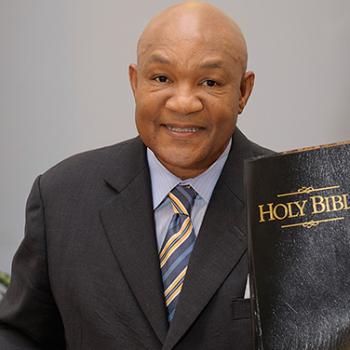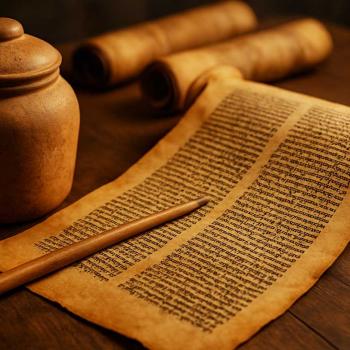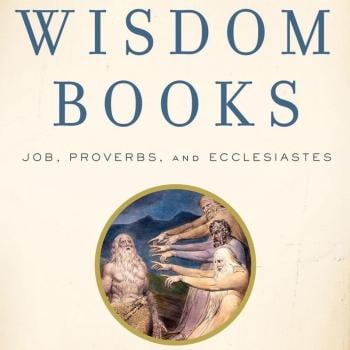N.B. Ken Collins wrote some of the chapters in this book, Jerry Walls others. More specifically, Collins is responsible for chapters 2,3,6,7,9-12,15-19, and Walls is responsible for chapters 1,4,5,8,13,14, and 20. This post has Collins’ summaries, the next one, Walls’ summaries (BW3).
Roman But Not Catholic: Chapter Summaries
Kenneth J. Collins
Introduction
Drawing upon their own personal experience with the Roman Catholic Tradition, Collins and Walls reveal why this book is needed today in an ecumenical context that has become increasingly and annoyingly superficial. Difficult though remarkably pertinent questions have hitherto been avoided in order to achieve a climate of what has proved to be little more than a vapid workability, one that fails to accurately describe the actual state of Christianity, in its diversity of theological traditions, in the world today. Beyond this, Collins and Walls pay considerable attention to tone and to a proper spirit in this work and therefore reject an earlier Protestant polemic and apologetic that failed to appreciate Roman Catholics as our brothers and sisters in Christ.
2. Tradition and the Traditions
Impugning a misconception of the meaning of Sola Scriptura that is still being championed by Roman Catholic apologists today, this chapter demonstrates that orthodox Protestants affirm both the authority of Scripture and the considerable value of church tradition in the form of the rule of faith, ancient creeds and ecumenical church councils. Upholding the normative value and authority of Scripture, as the only unquestioned standard of faith and practice, Protestants do indeed make allowance for tradition properly understood even in terms of how Scripture is to be interpreted in the first place. However, once the canon was recognized by the ancient ecumenical church in the fourth century, the Body of Christ had a unique standard to judge the suitableness of all subsequent traditions, some of which were offered only by the Roman Catholic Church, itself, and which therefore clearly departed from Scripture now understood as revelation. That is, these all-too-human traditions, affirmed only be Rome, are evidenced in such doctrines as purgatory, the immaculate conception and the treasury of merits to name a few. All of these gave the Roman tradition a distinct and at times separating flavor, even from Eastern Orthodoxy.
3. Scripture: No Greater Authority?
Here the reality that Roman Catholics and Protestants read different Bibles is explored in a couple of key ways. First of all, these traditions literally read different Bibles in that Rome accepts much of the Old Testament apocrypha though these additional books were rejected as canonical by ancient and modern Jews and by Jerome when he translated the Scriptures to produce the Latin Vulgate in the fourth century. Second, Roman Catholics and Protestants interpret the Bible in remarkably different ways. Protestants, for example, stress the clarity, sufficiency and the normative power of Scripture as it is interpreted by the community of believers who make up the tradition, and not by some feigned “individual” that only has life on the pages of Roman Catholic apologetical literature. Roman Catholics, for their part, understand the interpretive process much differently from Protestants as revealed in the following material drawn from the Catechism: “It is clear therefore that, in the supremely wise arrangement of God, sacred Tradition, Sacred Scripture, and the Magisterium of the Church are so connected and associated that one of them cannot stand without the others” (p. 41). This is a very bold claim in a number of ways. For one thing, it maintains that the proper interpretation of the Scriptures has been limited to the Roman Catholic tradition, apart from both Eastern Orthodoxy and Protestantism. This move is yet another example of how the Roman tradition alone, at least in her own estimation, is an unmatched authority: not only does its magisterium interpret the Bible for the entire church but not even Scripture can stand apart from this particular authority.
6. The Church, Part I: Excavating Rome’s Exclusive Ecclesial Claims
Roman Catholicism today contends, with considerable “wordplay” and equivocation surrounding the word “catholic,” that “Where there is Christ Jesus, there is the [Roman] Catholic Church” (p. 97). In this view, the Roman tradition alone is marked by a “complete confession of faith, full sacramental life, and ordained ministry in apostolic succession” (p. 97). However, this chapter maintains that the appeal to the notion of apostolic succession in order to sustain the distinct ecclesiastical claims of Rome is exceedingly problematic. In light of considerable historical evidence, it must be noted that the current claim that Rome’s bishops, distinguished from elders, are a part of a chain of succession that goes all the way back to the first century, to Peter in particular, is confused on so many levels and is therefore false. Indeed, such a claim is anachronistic in that it takes the later historical realities of the Roman tradition and reads them back into the past of the ancient ecumenical church where they simply do not belong. Beyond this, this chapter demonstrates that Rome’s appeal to apostolic succession is one of the ways that it continues to divide the church in general (maintaining that Protestants are “separated brethren,” for example) and the communion table in particular (Protestants are not welcomed).
7. The Church, Part II: Are Other Traditions Ecumenically Understood?
Given Rome’s distinct ecclesiology in which this particular tradition maintains that it is the center of the church in which the Body of Christ subsists, this chapter explores the implications of this teaching by raising two keys questions: First, is Roman Catholicism an ecumenical church? Second, this initial question can be properly answered by posing a second one that is very practical and down to earth by taking into account the burgeoning success of Pentecostalism in both Latin and South America: Is the transition from Lutheranism to Roman Catholicism, as for example by the late Richard John Neuhaus, the same as or the theological equivalent of that by a Brazilian, for instance, who was baptized as a Roman Catholic but who is now an evangelical Protestant? Readers will be surprised to learn that Rome does not view these two transitions or conversions as equal: indeed, the one leads to eternal life; the other leads to condemnation by the Roman magisterium in both the Catechism and Canon Law. This is not the judgment of a genuinely ecumenical church.
9. Sacraments: Baptismal Unity and Separated Suppers
Though Rome claims that baptism is the gateway to the remainder of the sacraments and that it constitutes the “foundation of communion among all Christians” (p. 147), both statements are belied by actual Roman Catholic practice in that Protestants (and even Eastern Orthodox) are barred from the communion table as a matter of course, though individual priests may, of course, act idiosyncratically. This exclusionary practice, in which Rome is functioning more as a sect than as a church, grows out of a troubled ecclesiology in which Rome, once again, ever sees itself as the center. In particular, the exclusion of Protestants from the Lord’s Table is based upon the mistaken notion of apostolic succession, through which Protestant orders are judged to be invalid, and upon the failure of Protestants, in the eyes of Rome at least, to affirm the fullness of the sacramental ministry in the Eucharist. In short, a table that should have been an emblem of unity has now become, through this vigorous ecclesiastical reworking of Rome, the very place of division.
10. Priesthood: From Presbyter to Priest, from Table to Altar
By the time of the late second century, presbyters were beginning to morph into priests who were distinguished from the remainder of Christians by special sacerdotal powers. This chapter, then, undertakes two key questions in light of this major development in the life of the church: “First, did changes in how the Lord’s Supper was viewed in the later church give rise to and actually create the Christian priestly role? Second, did modifications in terms of how the offices of presbyter and bishop were later configured result in viewing the Lord’s Supper in a remarkably new way? Answers to these questions reveal that the fellowship table of the first Lord’s Supper was transformed into an altar (while still also remaining a table) and the role of presbyter became one of a re-worked Levitical priest that helped to separate Roman Catholic priests (with indelible marks, special powers and the like) not only from Protestants (who in the eyes of Rome lack such powers) but even from Roman Catholic laity themselves.
11. The Papacy: Shaking the Foundations
Though Roman Catholic apologists like to claim, even today, that the Apostle Peter was the first pope, the historical record paints a much different picture. One of the problems in contending that the current Pope Francis, for example, is a part of a succession of Bishops of Rome that goes back to the Apostle of Peter of the first century is that a monarchical bishop, one distinguished from a presbyter (the kind that Rome needs for its claims) was not present in the city of Rome until that latter part of the second century according to the best scholarship available today. In fact, the marks or traits that make up the papacy, a particular constellation of claims, was actually not in place until about the fifth century at the earliest. Any claim then that maintains that there were popes in the first century commits the historical error of anachronism, that is, of reading back into earlier times realities that actually took centuries time to develop.
12. Machiavellian Machinations and More: The Later History of the Papacy
When it comes to the papacy Roman Catholics must learn to think in terms of centuries, to take a much larger view into consideration, so that this office will be properly understood and assessed. Indeed, the “recent images of smiling, happy, effective leaders, popes [like John Paul II and Pope Francis, for example] who have all the markings of magnificent and generous people, fill the minds of contemporary Roman Catholic laity, who therefore so readily assume, especially in terms of the papal office,” (p. 221) that it has always been so. Unfortunately, it has not. This chapter therefore displays what can best be described as “the dark side of the papacy” as it chronicles the lives of several wicked popes, Alexander VI in particular, an effort that in the end casts considerable doubt upon the notion that somehow or other the papacy is a divine office.
15. Mary: Why She Matters
The history of the church since the time of the Reformation demonstrates that it has become increasingly difficult for various Christian theological traditions to come to a balanced view on Mary. One is confronted, on the one hand, with Protestant neglect in the form of hardly mentioning Mary at all (though she does play a key role in the economy of salvation), or with Roman Catholic excess in which doctrines about Mary are promulgated that have no grounding in Scripture and which, unfortunately, detract in some sense from the unique role of Jesus Christ. In aiming at balance, then, this chapter considers Mary as Theotokos (the bearer of God) and celebrates this affirmation but quickly cautions that this doctrine is actually a Christological one in which Christ was and remains the focus of attention, not Mary. This proper balance was eventually lost in the Roman Catholic tradition and Mary, herself, became the star of a narrative she never intended or would even recognize. This chapter also considers the Marian doctrine of the perpetual virginity of Mary and the notion of a perfect sexless marriage.
16. Mary Again: From Dogmatic Definition to Co-Redeemer?
Beyond the two Marian doctrines explored in the preceding chapter (bearer of God and perpetual virginity), two others have emerged, without Scriptural support, due in large part to Rome’s own distinct understanding of tradition, namely, the Immaculate Conception and the bodily Assumption of Mary. When these two additional doctrines are considered in light of the two from the previous chapter, a genuine Mariology emerges in that these teachings seem to imply one another such that once they are in place they begin to take on a life of their own. Indeed, the four Marian doctrines, when considered together, have led others in the Roman Catholic church recently to call for a fifth teaching about Mary: that she is a Mediatrix, in a more modest sense, or even a Co-Redemptrix in a more unbalanced and unguarded one.
17. Justification Roman Style
Though some Protestants and Roman Catholics have come to believe that these two distinct theological traditions are in accord on the doctrine of justification by faith, there actually are many differences to be discerned in this area. Indeed, in its teaching of justification Rome continually (from the Council of Trent forward) confuses justification, a “reckoning as righteous” with sanctification, a “making righteous.” This major, not insignificant fault, is also reflected in Rome’s confusion of imputation with impartation, the forensic with the ontological, such that this particular theological tradition is unable to embrace fully, with all of its implications, a crucial teaching that no one less than the Apostle Paul celebrated, namely, that God justifies not the righteous or those who are holy but sinners, yes, sinners: “However, to the one who does not work but trusts God who justifies the ungodly, their faith is credited as righteousness.” Romans 4:5 (NIV2011) Failing to develop the Augustinian teaching of operant grace, which moves in the direction of monergism, especially in terms of justification, Rome is left simply with co-operant grace which is unable to get the job done, so to speak.
18. Justification: The Joint Declaration and Its Aftermath
“With much fanfare…the Roman Catholic Church, more specifically its Pontifical Council for Promoting Christian Unity, and the Lutheran World Federation signed the Joint Declaration on the Doctrine of Justification in the historic city of Augsburg…on the October 31, 1999, anniversary of the Reformation” (p. 339). However, not everyone was celebrating. Indeed astute theologians both in Germany and in the United States realized that when the Joint Declaration was carefully examined it represented in many instances the Roman Catholic Church’s take on things even down to the ongoing confusion of justification and sanctification that was unfortunately acceded to by the Lutherans involved in this theological enterprise. In fact, the same missteps that were already noted in the previous chapter are all present here as well and the voice of Trent, interestingly enough, has been preserved even here. Moreover, after the promulgation of the Joint Declaration, and after the issuing of Dominus Jesus: On the Unicity and Salvific Universality of Jesus Christ and the Church in 2000 by Cardinal Ratzinger, who later became Pope Benedict XVI, the German Protestant church quickly realized that the old Roman ecclesiology still remained, even after the Joint Declaration. What’s more an American theologian pointed out that the ecclesiology present in Dominus Jesus actually undermines not only a proper understanding of the church but also the doctrine of justification as presented in the Joint Declaration itself.
19. Regeneration, Assurance, and Conversion: A Minor Chord in Roman Catholic
Theology?
The sacramental configuration of redemption by the Roman Catholic church is clearly evident in the areas of new birth and assurance which are some of the major doctrines that make up what many in the church have called conversion. Remarkably enough, there is no separate section in the Catechism on the new birth since it is subsumed under the sacrament of baptism. Even the doctrine of assurance is only considered against the backdrop of Roman Catholic ecclesiology in which it emerges not as the personal doctrine that Paul had described in Romans 8:16, “The Spirit himself testifies with our spirit that we are God’s children,” (NIV2011) but as a corporate one: “Can the church not have a corporate assurance in terms of the liturgical actions of its ordained ministers?” (p. 364). Given the challenge of Pentecostalism in Latin and South America with its championing of the necessity (on the authority of Jesus) of being born again, this chapter shows the Roman Catholic need for a robust doctrine of the new birth which not only has sacramental expressions but also will have its own place in the Catechism.
Conclusion: A Come to Jesus Moment
The title Roman but Not Catholic epitomizes three major themes that the book has developed. First, it highlights the exclusivity of the Roman Catholic Church in bringing forth many of its claims…. Second,…it underscores the separation created by the Roman Catholic Church precisely in making many of its exclusive claims….[and] third, the title Roman but Not Catholic emphasizes the authoritative basis upon which so many Roman Catholics, especially conservative ones, actually build their lives of belief, discipleship, and Christian service,” (pp. 401-402) which evidences not Sola Scriptura but in actuality, Sola Roma. After these three themes are considered, the book concludes with a trenchant scenario and with a pungent, disturbing question: “If both Roman Catholics and Protestants will be sitting at the table together at the great wedding supper of the Lamb of God, how then were their earlier divisions overcome in that place of glory and what does all of this say about their ongoing division today? That is truly a “deep” ecumenical question.















